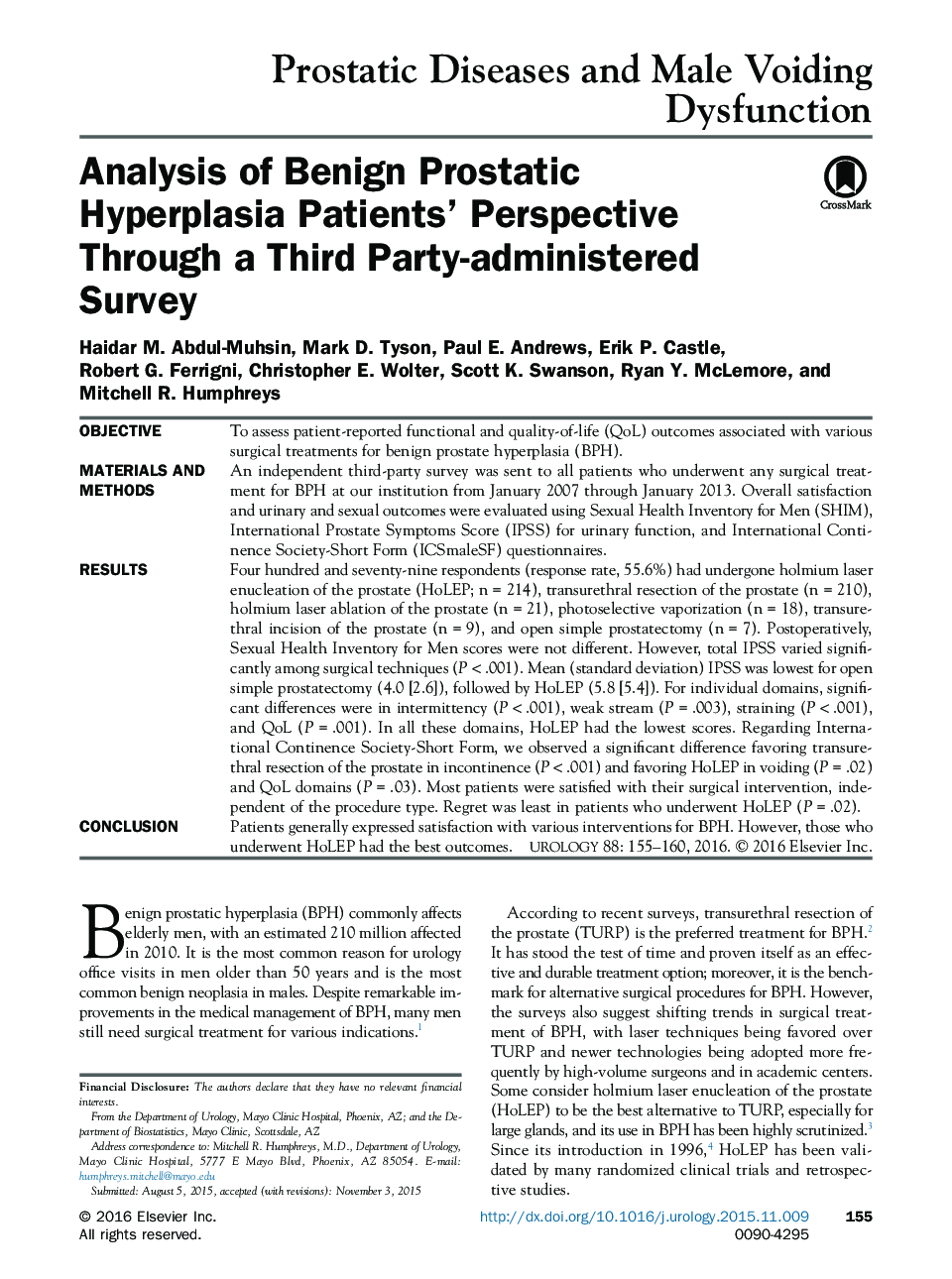| کد مقاله | کد نشریه | سال انتشار | مقاله انگلیسی | نسخه تمام متن |
|---|---|---|---|---|
| 3898346 | 1599264 | 2016 | 6 صفحه PDF | دانلود رایگان |
ObjectiveTo assess patient-reported functional and quality-of-life (QoL) outcomes associated with various surgical treatments for benign prostate hyperplasia (BPH).Materials and MethodsAn independent third-party survey was sent to all patients who underwent any surgical treatment for BPH at our institution from January 2007 through January 2013. Overall satisfaction and urinary and sexual outcomes were evaluated using Sexual Health Inventory for Men (SHIM), International Prostate Symptoms Score (IPSS) for urinary function, and International Continence Society-Short Form (ICSmaleSF) questionnaires.ResultsFour hundred and seventy-nine respondents (response rate, 55.6%) had undergone holmium laser enucleation of the prostate (HoLEP; n = 214), transurethral resection of the prostate (n = 210), holmium laser ablation of the prostate (n = 21), photoselective vaporization (n = 18), transurethral incision of the prostate (n = 9), and open simple prostatectomy (n = 7). Postoperatively, Sexual Health Inventory for Men scores were not different. However, total IPSS varied significantly among surgical techniques (P < .001). Mean (standard deviation) IPSS was lowest for open simple prostatectomy (4.0 [2.6]), followed by HoLEP (5.8 [5.4]). For individual domains, significant differences were in intermittency (P < .001), weak stream (P = .003), straining (P < .001), and QoL (P = .001). In all these domains, HoLEP had the lowest scores. Regarding International Continence Society-Short Form, we observed a significant difference favoring transurethral resection of the prostate in incontinence (P < .001) and favoring HoLEP in voiding (P = .02) and QoL domains (P = .03). Most patients were satisfied with their surgical intervention, independent of the procedure type. Regret was least in patients who underwent HoLEP (P = .02).ConclusionPatients generally expressed satisfaction with various interventions for BPH. However, those who underwent HoLEP had the best outcomes.
Journal: Urology - Volume 88, February 2016, Pages 155–160
